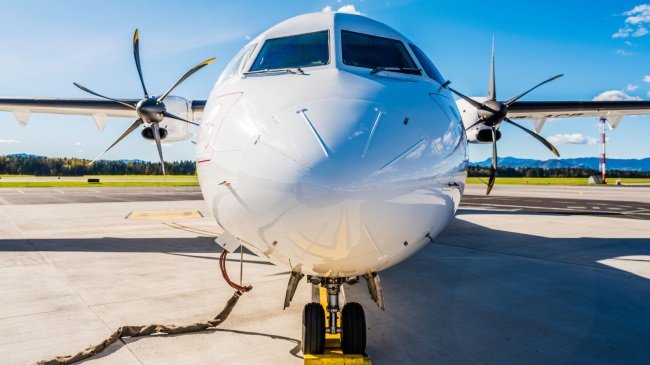
Aircraft composites, a technological marvel, are transforming the aviation industry with their unique properties and applications. These materials, typically a combination of carbon fibers and resins, bring a paradigm shift in aircraft design, offering enhanced strength, reduced weight, and improved fuel efficiency. Delve into the evolution, advantages, common materials, applications, challenges, and future trends of aircraft composites, dissecting their role in reshaping the skies.
Evolution of Aircraft Materials
Traditionally, aluminum dominated aircraft construction due to its lightweight and corrosion-resistant properties. However, the quest for greater fuel efficiency and durability propelled the aviation industry to explore alternatives. The breakthrough came with the integration of composite materials into aircraft design.
Advantages of Aircraft Composites
-
Strength and Durability
One of the primary advantages of aircraft composites lies in their exceptional strength-to-weight ratio. This property enhances structural integrity and durability, allowing aircraft to withstand diverse operating conditions with reduced wear and tear.
-
Weight Reduction
The adoption of composites in aircraft construction leads to a significant reduction in overall weight. Lighter aircraft translates to improved fuel efficiency, decreased operational costs, and increased payload capacity.
-
Corrosion Resistance
Unlike traditional metals, composites exhibit remarkable resistance to corrosion. This resistance contributes to prolonged aircraft lifespan, resulting in lower maintenance costs over time.
-
Design Flexibility
Composites offer designers unparalleled flexibility. This flexibility allows for intricate designs, optimizing aerodynamics and enabling innovative aircraft shapes that enhance overall performance.
Common Composite Materials
-
Carbon Fiber
Carbon fiber is a standout material in the realm of composites, known for its remarkable strength and lightweight properties. Its integration enhances structural components’ strength while minimizing weight.
-
Fiberglass
Combining woven glass fibers with resin, fiberglass offers a cost-effective solution in composite manufacturing. It provides good strength characteristics, making it suitable for various applications.
-
Kevlar
Kevlar, recognized for its high tensile strength, finds application in specific aircraft components where impact resistance is crucial. It contributes to reinforcing critical areas for enhanced safety.
Applications of Aircraft Composites
-
Structural Components
Aircraft composites find extensive use in critical structural elements such as wings, fuselage, and tail sections. This integration enhances overall aircraft strength and durability.
-
Interior Components
Composites contribute to the manufacturing of lighter and more durable interior components. This not only improves passenger comfort but also reduces the overall weight of the aircraft.
-
Aerofoils
Wings, control surfaces, and other aerofoils benefit significantly from composite materials. The combination of strength and aerodynamic efficiency is particularly advantageous in these applications.
Challenges in Composite Usage
-
Cost
Despite their myriad benefits, the initial production costs of composites remain higher than traditional materials. This cost factor influences the economic feasibility of widespread adoption in aircraft manufacturing.
-
Repair Complexity
While composites offer exceptional durability, repairing them can be a complex task. Specialized skills and equipment are often required, potentially leading to increased maintenance costs.
-
Recycling
The recycling process for composites is still evolving. Finding sustainable and efficient ways to recycle or dispose of these materials poses a challenge in achieving comprehensive environmental responsibility.
Future Trends in Aircraft Composites
-
Advanced Manufacturing Techniques
Ongoing research focuses on refining manufacturing techniques to reduce production costs without compromising the structural integrity of composites. Advancements in this area could lead to more widespread adoption.
-
Sustainable Composites
In alignment with global sustainability goals, there is a concerted effort to develop eco-friendly composite materials and manufacturing processes. The aviation industry is exploring ways to make composites more environmentally friendly and sustainable.
Aircraft composites represent a monumental shift in aviation, propelling the industry towards greater efficiency, safety, and sustainability. Their unique combination of strength, reduced weight, and enhanced durability has redefined the parameters of aircraft design. From traditional aluminum to innovative composites, the evolution reflects a commitment to advancing aviation technology. As technology continues to evolve, addressing challenges such as cost, repair complexity, and recycling will be crucial for the widespread acceptance of aircraft composites. The ongoing exploration of advanced manufacturing techniques and sustainable composite materials signals a promising future for these materials in aviation. The integration of aircraft composites marks a pivotal chapter in aviation history, illustrating the industry’s dedication to pushing boundaries and embracing innovations that not only enhance performance but also contribute to a more sustainable and eco-friendly aviation landscape.
The use of aircraft composites has revolutionised aviation, advancing the sector’s sustainability, efficiency, and safety. The boundaries of aircraft design have been reinvented by their exceptional blend of strength, lighter weight, and increased longevity. The progression from conventional aluminium to cutting-edge composites shows a dedication to improving aviation technology.

